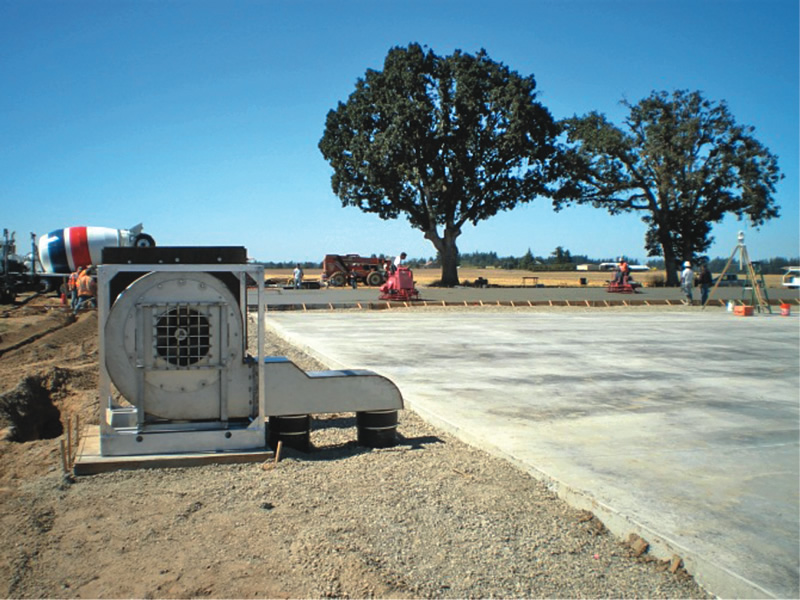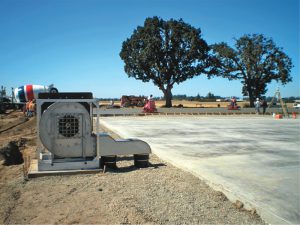BioCycle January 2013, Vol. 54, No. 1, p. 12
Grand Rapids, Michigan: Residential Organics Collection Service
The city of Grand Rapids has had a single-stream recycling program for several years, but does not collect organics for recycling. Nor does the city allow backyard composting. As a result, opportunities to divert organic waste were not available to residents until a local company, Organicycle, Inc., entered the picture about a year ago. Founded by Dan Tietema, who formerly owned a medical waste processing firm, Organicycle is in its second year of operation. The firm started out doing commercial food waste pick ups in January 2012, teaming up with Busy Bea’s, a janitorial service, to offer business customers seamless composting service. Today, between its residential and commercial clients, Organicycle is collecting about 10 tons/week of food and paper waste from customers in greater Grand Rapids, plus the cities of Kalamazoo, Muskegon and Holland, according to Justin Swan, vice-president of sales and development.

Organicycle uses digital billboards to promote their residential organics collection service in Grand Rapids, Michigan.
In December, Organicycle also began collecting spent grain generated by Michigan’s first organic brewery, Grand Rapids Brewing, Inc. The grain is delivered to two organic farms in the area that use it for livestock feed and for producing bread. Organicycle’s owners would like to eventually expand the grain recycling service to about a dozen farms in Ottawa and Kent Counties, Swan notes. The company also has been working with Synenergy, Inc., a biofuels processor in Byron Center, Michigan, to test the feasibility of providing organic waste to fuel a bioethanol plant and with a Colorado firm to develop an anaerobic digestion project in western Michigan. He adds that Organicycle achieved profitability last September, a few months ahead of schedule, and has its eye on steady growth in the coming months. “We have identified eight revenue streams for our business and hope to expand on those as building blocks, and then duplicate that model in other markets.”
Phoenix, Arizona: University Introduces Composting Program
Arizona State University (ASU), with four campuses in Phoenix and the surrounding metro area, has introduced a composting program and joined the U.S. Environmental Protection Agency’s Food Recovery Challenge (see “Sustainable Food Management In Action,” March 2012 and “Tightening The Belt By Reducing Food Waste,” November 2012). ASU recently introduced “back-of-the-house” composting at two dining halls on its Tempe campus, and plans to expand the Green Bin program throughout its four campuses, beginning in January 2013, according to Nick Brown, director of sustainability practices at ASU. The program will support ASU’s “Zero Waste by 2015” goal, which aims to reduce all waste destined for the landfill by 90 percent. In 2012, ASU disposed 6,778 tons of waste, 25 percent of which was food scraps from meals, Brown notes.
ASU is using containers of various sizes to collect food and paper dining waste, from 5 gallon containers in kitchenettes, break rooms and similar areas, to 23-gallon “slim jims” in food courts, to 40-to 50- gallon containers for large outdoor events such as football games. Three-cubic yard, dockside bins are used for waste pick up. The university’s hauler, Waste Management (WM), collects the food waste with “assurance that it really will become compost,” Brown says. WM has a composting site about 30 miles southwest of Tempe. The amount collected for compost will increase over time, he notes. “We’re only diverting about 20 tons a week, not nearly where we want to be.”
For some time, ASU has had a yard trimmings composting program in partnership with Ken Singh Farms, a local farm that composts organic wastes. ASU Facilities Management diverts an average of 12 tons/month of green waste from area landfills. (The farm is not permitted to compost food waste.) In return, ASU has received about 7.5 tons of compost and mulch for use in landscaping and as a soil amendment for the on-campus vegetable gardens maintained as part of ASU’s Local Foods Initiative — a program to harvest and use food grown on campus. ASU officials are working to develop more composting initiatives. As food waste collection grows, the frequency of Waste Management’s trash collection will be gradually reduced.
Syracuse, New York: Destined To Recycle Food Waste
Destiny USA, a 2.4 million square foot regional shopping center and entertainment destination in Syracuse that attracts over 20 million visits annually, has joined other commercial entities in the region that are reducing their waste through food scrap recycling. Through a coordinated effort with its 22-plus food vendors, the Onondaga County Resource Recovery Authority (OCRRA) and its hauler Waste Management, Destiny USA is collecting and composting source separated food waste. Over the past five months, more than 100 tons have been diverted to OCRRA’s Amboy composting facility.
Destiny USA is a LEED® Gold Certified green project. According to Greg Gelewski, OCRRA’s Recycling Operations Manager, the food waste diversion process happens behind the scenes. “Coffee grounds from Starbucks, dough and pretzels from Auntie Anne’s, food scraps from Koto’s Japanese restaurant and other dining establishments bring their food waste to designated containers located throughout kitchens and common waste areas,” he explains. “The containers are emptied on a regular basis into sealed, 64-gallon bins supplied by Waste Management. The hauler has been collecting over 8,000 lbs/week of food waste from Destiny USA. The company has set a goal to compost over 500 tons of food waste in 2013.”
Food waste is mixed with leaves, grass and other yard trimmings at the Amboy facility. “We mix one part food waste with three parts yard waste and arrange it in 80-foot long piles over a simple pipe and blower system,” says Dave Nettle, OCRRA Recycling Specialist. Its “Amboy Blend” Food Waste Compost is popular among residents and businesses, and has been used across New York State on high-profile projects like the West Point Parade Fields and the Jacob Javits Center in New York City, as well as on the green roofs of The Oncenter/War Memorial in Syracuse, adds Nettle.
OCRRA is moving forward with expansion of the composting facility. “We currently have a request for bids for construction,” says Gelewski. “Bids are due on February 7th. The New York Department of Environmental Conservation is currently drafting our permit to handle 9,600 tons of food waste and 48,000 cubic yards of yard trimmings annually.” OCCRA expects to start receiving food waste from 10 Wegmans grocery stores in 2013. Other generators serviced by the OCCRA food waste program include hospitals, schools and universities, and hotels.
Mount Angel, Oregon: Hop Compost
Mount Angel is in the Willamette Valley in Oregon, where much of the specialty hops for microbreweries are grown. Hop producers generally have their own processing operations close to the fields to strip, separate, dry and bale the hop flowers (also referred to as cones) from the vines and leaves immediately after cutting. “Hops grow in giant vines that can be 18-feet long,” says John Annen of Annen Farms, a third generation hop farm near Mount Angel. “Only the hop cones go to the brewery. The plants are grown on trellises. They are cut down and the cones are stripped off. The harvest lasts for about 30 days.” Because of the concentrated time frame, hop farmers tend to stockpile the plant waste on an unused field during the harvest and let it decompose on its own. Annen would try to grind the vines and leaves and spread them back on the hop fields. “That doesn’t work well anymore as we grow so many different varieties of hops for the microbreweries, and some hops still have viable weed seeds when the plant waste is spread,” he explains. “We can’t run the risk of mixing the seeds.” Another concern was related to potential ground water contamination from the stockpiled green waste.To address the situation, Annen Brothers, teamed up with Stettler Supply, its local irrigation system contractor, and they looked for a composting system that needed the smallest land area possible, had the capacity to hold large volumes and allowed their trucks to dump and run back for another load as quickly as possible. “Originally we were looking at composting in windrows and turning the piles, but that ended up requiring a huge land area,” says Annen. “And we get 35 to 40 inches of rain per year, so we would have needed cement on the floor and a building or cover over it. We estimated it would have to be 5 acres, and we couldn’t afford that.”
Annen Farms learned about the Earth Pad technology sold by Green Mountain Technologies, which suggested a 120-foot by 300-foot sized aerated pad. It could be located adjacent to its processing facility, almost eliminating travel time. The design involved turning the compost by loader and manure spreader twice, and watering as needed to keep the piles biologically active. Aeration pipes are under the cement slab; a small riser comes to the surface every 5 feet to aerate the solid bed of hop waste stacked 7 to 9 feet tall. “The goal is to complete the composting process in 6 weeks,” says Annen. “We can have it made and back on the fields ideally before fall rains come. We loaded the composting pad for the first time on October 1st last fall, and had the most beautiful compost by November 15.” Vinyl covers made from recycled billboards are being used to keep the product dry until the spring. A metal 3-sided building (60 foot by 120 foot) is scheduled to be erected on the far end of the Earth Pad to store the compost.
Seattle, Washington: Carbon Credits From Composting
Seattle City Light, a public utility serving 740,000 residents in Seattle, signed a contract with The Climate Trust in Portland, Oregon to launch the first-ever national project to voluntarily purchase carbon credits from reductions made with composting. The utility purchased 35,000 carbon reduction tons (CRTs) of verified emission reductions from two composting facilities in the Seattle region operated by Cedar Grove Composting. “Seattle City Light’s long-term goal is to meet all of Seattle’s electricity needs through conservation, new renewable sources, and with renewable energy credits to maintain zero net greenhouse gas (GHG) emissions,” explains Corinne Grande, Seattle City Light Power Analyst in the Environmental Affairs Division.
Cedar Grove Composting worked with Environmental Credit Corp (ECC), a carbon offset project developer, to meet the requirements of the Climate Action Reserve’s (CAR) new Organic Materials Project Protocol, manage the verification process and structure carbon credit transactions. The two composting projects are distinguished as the first projects quantified and verified under this new protocol, and also as some of the first carbon transactions involving organics composting domestically. The facilities accept yard trimmings, food waste and wood from a variety of residential and commercial sources, including Seattle and King County, Washington, as well as other counties in the state. In addition to the credits purchased by Seattle City Light, other environmental and economic benefits of the methane reduction project include the ability to utilize recycled food material as compost; improving soil health and structure; increasing drought resistance; and reducing the need for supplemental water, fertilizers and pesticides.
Utilities such as Seattle City Light have relied on The Climate Trust (TCT) to finance and effectively manage numerous greenhouse gas reduction projects. “While The Climate Trust is well-versed in helping regulated utilities meet their compliance obligations, the heart and soul of our operations is in working with project developers such as ECC to achieve our mission and help mitigate climate pollution,” notes Ben Vitale, President of The Climate Trust.
Philadelphia, Pennsylvania: Compost Activist
While getting her Masters in Environmental Studies at the University of Pennsylvania, Paige Hasling began developing the “Compost Activist” website, www.compostactivist.com, “Advancing the Alchemy of Soil and Society.” The site, still in the development phase, features resources for composting, primarily downloadable PDF files created by public agencies, universities and nonprofits. “I am passionate about composting, and I hope that my website will further the cause,” says Hasling. “I realize that much of my knowledge is theoretical, and would appreciate feedback/suggestions to improve the content.” Comments, and additional resources to add to the website, can be emailed.











